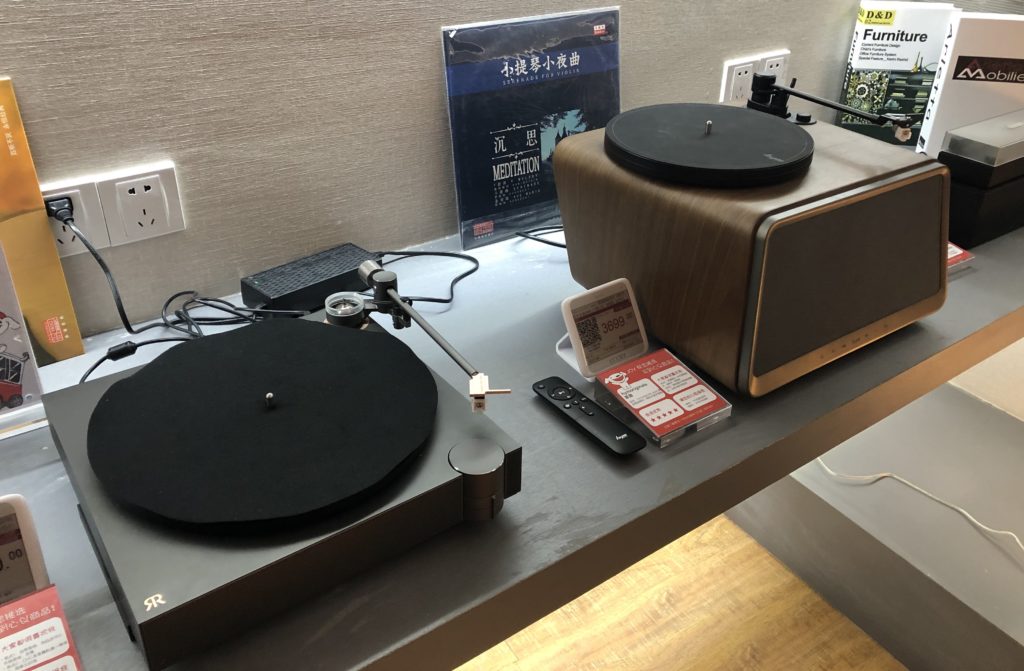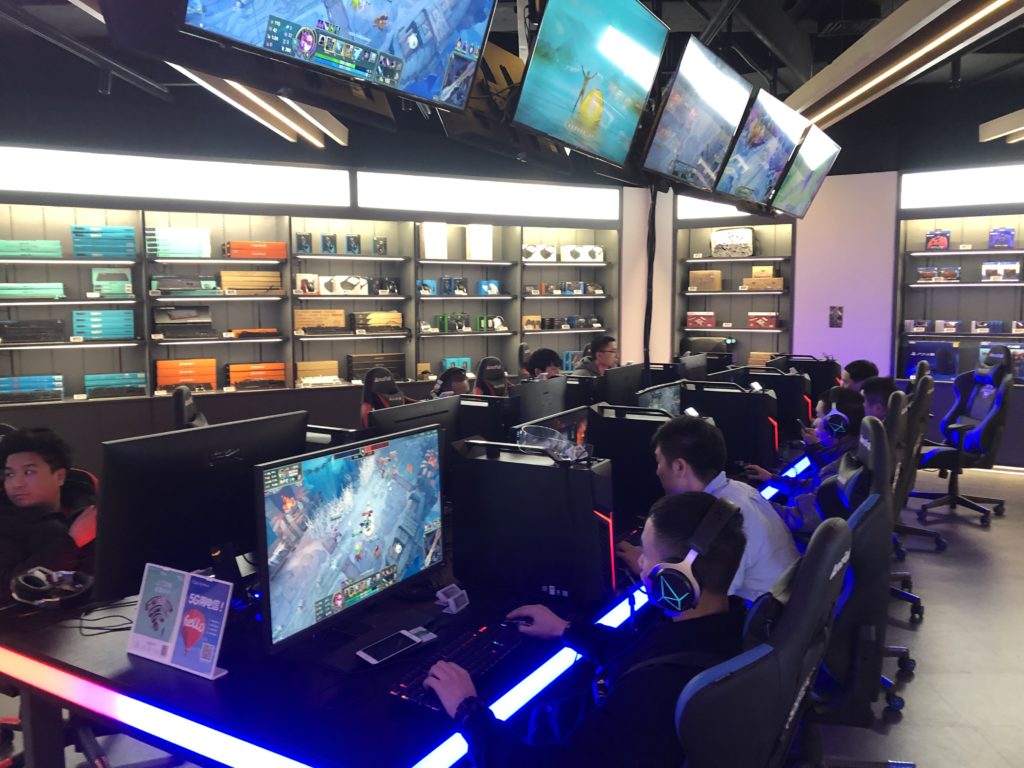In Part 1, I detailed my visit to JD’s new E-Space store in Chongqing. And I ended by posing the following question:
- Does experiential retail dramatically improve the consumer experience in department stores?
- Does it dramatically improve the merchant / brand experience and capabilities?
And my answer to that is yes in 6 situations.
In most cases, like trying out microwaves, toasters and blenders in the store, it’s petty clear that new retail and “experiential” is not a game changer. You don’t really need to try these products in person. You can just buy them online. Or you just see them on a shelf in a store and that’s fine. So being able to try them is nice, but it doesn’t dramatically improve the consumer exerperience.
In other cases, like smartphones, washing machines and furniture, digitized and “experiential” retail is a nice upgrade to current consumer behavior. People generally like to see these types of products in person when they buy them. They want to sit on the sofa. They want to play with the smartphone. So having an “experiential” retail center is a nice and upgraded version of something people are already doing. I would call it a digital upgrade, but not a game changer.
However, I did notice 6 situations where new retail-empowered experiential retail had some really compelling aspects to it.
Situation 1: Complicated Products
I really liked the space for cameras. You can try out the advanced DSLR and mirrorless cameras by Canon and such. They have detailed city models you can take pictures of. They have a gallery where users can post their photos. They even offer classes about photography. And they have after-sales support.
Why is that compelling?
Because “complicated products” require a certain level of education before and after you buy. It really does help to be able to try them out and talk to someone. The camera section reminded me of an Apple store where you can try everything – and you can also take classes and go to the Genius bar. Complicated products need a more educational-type of retail, where you educate the consumers on the more technical products and their functions. And you explain to them why this new camera is better. And worth the increased price.
There was also a small section for 3D printers, which I also put into the complicated products category. It does help to try them out and learn before you buy.
Situation 2: Premium Products
If you sell fairly straight forward products (vacuums, washing machines, etc.) at premium prices, how do you show the special features and quality differences that justify the price difference?
Dyson vacuums (popular in China) can go up to 6,000RMB in price. How can consumers see the quality difference unless they can try it out or talk to a sales staff? You certainly can’t tell just looking at a smartphone app. Experiential retail seems like a big deal in premium products.
I thought a really good example of this was the headphones section – where you can listen and hear the difference. Something you cannot do online at all. Try to buy headphones on a mobile app. How do you tell that the $200 ones are better than the $50 ones?
Scattered throughout were also some super-premium products. There was a 100,000 rmb washing machine and a 300,000 rmb refrigerator. If you are a merchant trying to sell those two products, you absolutely need an experiential center or showroom where you can tell your story and explain why it is worth the much higher price.
Situation 3: Obscure and Weird Products
Surprisingly, there was a room for classic record players. And that is really an odd product to be selling these days. Who buys records?
But if you are selling them, you need the opportunity to explain your more complicated story to the consumer. The consumer needs to be able to try it out and hear the difference. And see how cool the record players are.
Other products in this weird and obscure category are automatic window washers (the device moves on the window by itself). And one-wheel scooters. If something is weird, the merchant needs the opportunity to tell a more complicated story to the consumer.
Situation 4: New and Niche Products
One of the biggest things brands are doing in the E-Space is using it to launch new products. They use it to host events. They have their staff there to how the new product works and talk about its merits.
***
That’s most of the list. The last two situations are particularly interesting.
- Both Ninebot (one wheels and karts) and OnePlus (smartphones) have spaces in the E-Space. And these were their only physical retail spaces anywhere.
- There are quite a few spaces just for fun stuff, which brings people into the store. For example, there was a large gaming areas where you can play online. And where esports teams have competitions. This is likely to bring in younger consumers.
So let’s say there are 6 situations where experiential retail version 1.0 had a pretty compelling impact.
- Complicated products
- Premium products. Including super-premium products
- Obscure and weird products
- New and niche products
- Online-only brands
- Fun products
And I was looking for situations where the user experience is dramatically improved – such that traditionally run department stores are at a competitive disadvantage.
But, as mentioned, there are two user groups in marketplace business models (which JD is): consumers and merchants / brands. And you can dramatically improve for either group.
- So from the consumer side, experiential retail means trying things out in person. And in some cases that can be a significant improvement (as mentioned above).
- But from the merchant side, experiential retail could also mean being able to communicate and engage with consumers in a much better way. Especially around a more complicated product or brand story.
And, interestingly, you can see this difference in the lay-out of the E-Space.
Floors 1-2 Were About Improving the Consumer Experience
The first two floors were organized by product category, not brand. You go to the smart television section and they have all the brands side-by-side. Each tv is right next to the others so you can see the differences and compare them.
And it turns out smart televisions are a category where experiential retail matters. A big part of the smart tv category was comparisons of LED vs. OLED technologies. OLED is a newer technology and quite a bit more expensive. You can read about OLED online but when you actually see both technologies in person, you really do see the difference. Experiential retail is good at showing and explaining quality and premium price differences to consumers, especially in more technical or complicated products.
And most of the first two floors were organized this way. There were product category areas where you can try out products, learn about them and see the differences. And these floors were all staffed by JD. JD also chooses the brands and the specific inventory to show in these sections.
However, the third floor was organized by merchant / brand. And this where merchants can launch their new products. This is where they can let consumers try their premium products. It was really a space where brands can tell their more complicated stories – and have more communication and engagement with customers. This floor was staffed by 50% JD people and 50% people from the brands and merchants.
Experiential Retail and Real Estate Are Becoming Marketing?
Location has long been critical for retail. And then ecommerce came along and having real estate became a liability in many cases. Especially for those selling digital goods (Blockbuster, CD stores).
But now real estate is coming back as an almost critical channel for merchants and brands. Not for distribution or for sales, but for marketing and communication. The online world is more efficient (no physical costs) but it is also endlessly competitive. There is increasing competition for online attention and powerful gatekeepers (Facebook, Amazon, etc.). As a result, many merchants and brands are finding their only real direct and substantial connection to their customers may be via real estate once again. It’s like real estate has moved from the rental expense line to the marketing expense line of the income statement.
The goal of most of the major merchants and brands in the E-Space is not really to move lots of product. They are there for greater engagement with customers. And for communication. And for the opportunity to tell a more complicated and subtle brand story via experience. And this is particularly important for more complicated, expensive or obscure products. And especially for new product launches.
So What Are the Game Changers at JD’s E-Space?
Ok. Back to my main question.
JD’s E-Space was 50,000 sqm, 300 staff and 3 floors (with two vacant floors above) when I visited. It had 55 experience centers, a mobile app and on-demand delivery run out of JD’s Chongqing warehouse. And I think it is a game changer in three ways:
1) It is pulling the three big “new retail” levers: a DTC mobile app, digitized operations and on-demand delivery.
This is a big deal. The mobile app creates continuous two-way communication with customers – something traditional departments stores do not have at all. And on-demand delivery expands the radius of the sales floor to a 2-3 kilometer radius around the store.
Both of these are dramatic improvements over traditional departments stores. Offering delivery is not that difficult as there are lots of express delivery companies in China. But creating a popular and widely used mobile app is pretty difficult.
2) There are dramatic improvements in the consumer experience for niche and complicated products.
This includes cameras, 3D printers, record players, self-washing machines. The experience aspect plus the classes and after-sales service do significantly improve the customer experience. This will be a big problem for competitors.
3) There are dramatic improvements for merchants and brands in premium, obscure and complicated products.
This headphones, high-end washing machines and really anything where you need to tell a more complicated brand story.
***
Those are my working conclusions.
I asked what were the most popular areas of E-Space and was told (for women) it is the small make-up and beauty center on the second floor. For men, it was the consumer electronics. I was sort of surprised they didn’t make beauty larger in their first version of the E-Space. Experience can makes a big difference in beauty and fashion.
Overall, it was fascinating. Department stores and shopping centers are a pretty cool frontier in new retail. I think it is going to be one of the next big things.
Thanks for reading, jeff
I am a consultant and keynote speaker on how to increase digital growth and strengthen digital AI moats.
I am the founder of TechMoat Consulting, a consulting firm specialized in how to increase digital growth and strengthen digital AI moats. Get in touch here.
I write about digital growth and digital AI strategy. With 3 best selling books and +2.9M followers on LinkedIn. You can read my writing at the free email below.
Or read my Moats and Marathons book series, a framework for building and measuring competitive advantages in digital businesses.
Note: This content (articles, podcasts, website info) is not investment advice. The information and opinions from me and any guests may be incorrect. The numbers and information may be wrong. The views expressed may no longer be relevant or accurate. Investing is risky. Do your own research.









